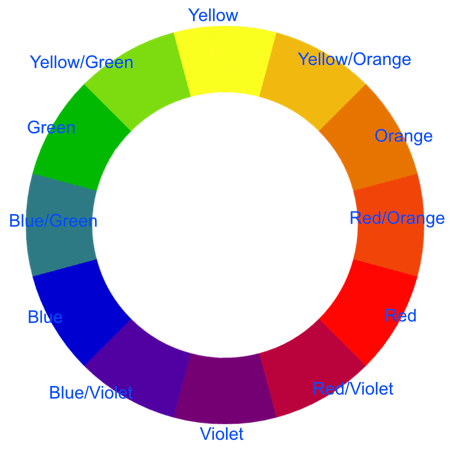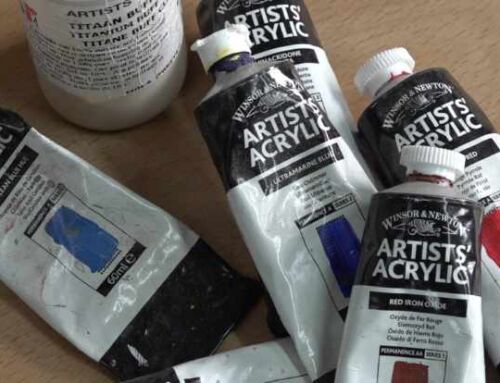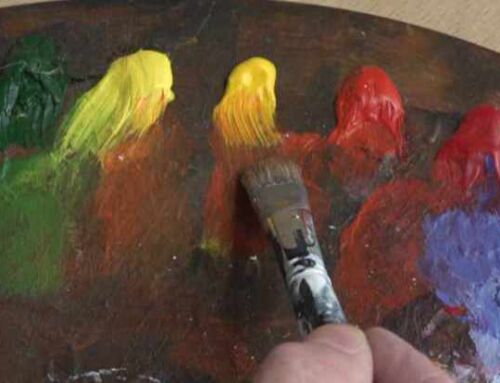It is essential you understand how to use colour. Understanding how colours mix will create a more successful painting.
Colour Basics
Bought yourself a colour wheel? Now let’s get to know what it does. Colour mixing is a skill worth knowing. We shall start with the three primary colours, red, yellow and blue. Let’s take red to start with. You’ll notice as red moves towards blue we see purple tones, red/violet, violet etc. The same process works with other primary colours. As yellow moves towards blue, greens are created, yellow towards red and oranges are created.
This is important for colour mixing because it will determine how successful your colour mixing is. For example, if crimson (red moving towards blue) is mixed with ultramarine (blue moving towards red) it will make a great purple. BUT and it is a big BUT!
A red moving towards the yellow, red/orange, mixed with ultramarine will make a brownish red. This is because you are effectively mixing the three primary colours together. Understanding whether a colour leans towards red, yellow or blue is vital if you wish to mix pure secondary colours. Checkout my video: Everything You Need to Know about Colour for more information.
If you look at colour charts produced by the paint manufacturers you’ll see colours grouped as you see in the colour wheel. Use this information to decide the colours you wish to paint with.
A basic palette might consist of the following. I would suggest buying a warm (red or yellow) and cool (blue) version of each of the primary colours, together with perhaps burnt sienna, burnt umber and white (acrylic and oil) and restrict yourself to these colours.
Learn what happens when you mix these together, so that it becomes second nature. It will be amazing how much your paintings will improve when you understand the basics of colour mixing.





Leave A Comment